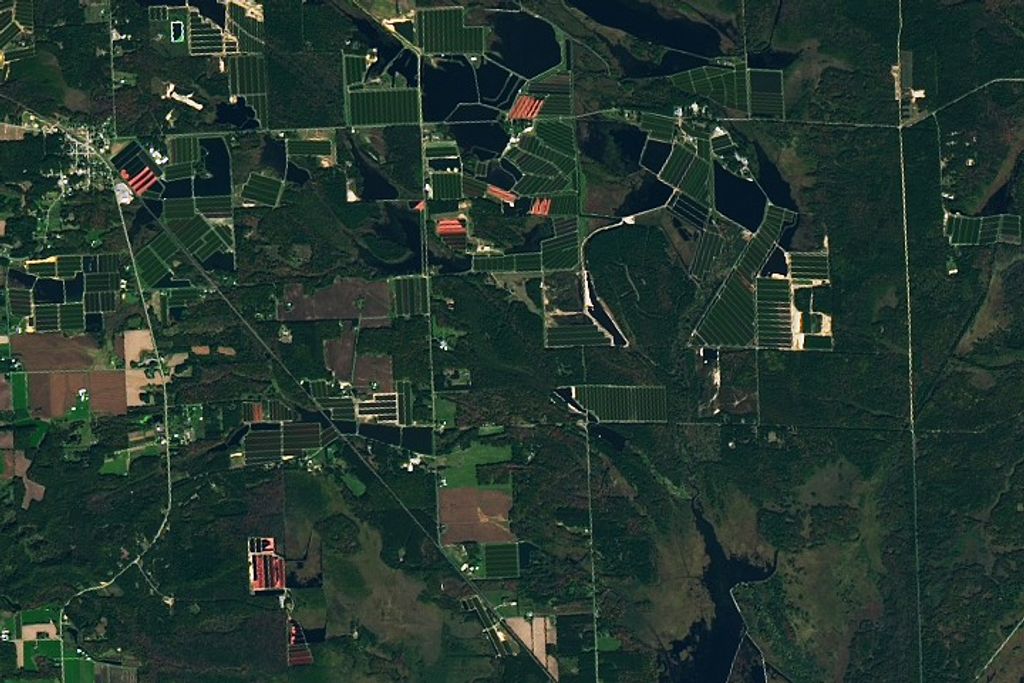1 min read
Gravitationally Lensed Quasars

Quasars' Multiple Images Shed Light on Tiny Dark Matter Clumps
Each of these Hubble Space Telescope snapshots reveals four distorted images of a background quasar and its host galaxy surrounding the central core of a foreground massive galaxy.
The gravity of the massive foreground galaxy is acting like a magnifying glass by warping the quasar’s light in an effect called gravitational lensing. Quasars are extremely distant cosmic streetlights produced by active black holes. Such quadruple images of quasars are rare because of the nearly exact alignment needed between the foreground galaxy and background quasar.
Astronomers used the gravitational lensing effect to detect the smallest clumps of dark matter ever found. The clumps are located along the telescope's line of sight to the quasars, as well as in and around the foreground lensing galaxies.
The presence of the dark matter concentrations alters the apparent brightness and position of each distorted quasar image. Astronomers compared these measurements with predictions of how the quasar images would look without the influence of the dark matter clumps. The researchers used these measurements to calculate the masses of the tiny dark matter concentrations.
Hubble's Wide Field Camera 3 captured the near-infrared light from each quasar and dispersed it into its component colors for study with spectroscopy. The images were taken between 2015 and 2018.
About the Data
- Data DescriptionData DescriptionProposal: A description of the observations, their scientific justification, and the links to the data available in the science archive.
Science Team: The astronomers who planned the observations and analyzed the data. "PI" refers to the Principal Investigator. - InstrumentInstrumentThe science instrument used to produce the data.WFC3/IR
- Exposure DatesExposure DatesThe date(s) that the telescope made its observations and the total exposure time.30 April 2013 through 15 August 2018
- FiltersFiltersThe camera filters that were used in the science observations.F105W, F140W, F160W
- Object NameObject NameA name or catalog number that astronomers use to identify an astronomical object.RX J0911+0551, WGD J0405-3308, HS 0810+2554, PS J1606-2333, WFI 2033-4723, SDSS J1330+1810
- Object DescriptionObject DescriptionThe type of astronomical object.Background quasars gravitationally lensed by foreground galaxies
- Release DateJanuary 8, 2020
- Science ReleaseHubble Detects Smallest Known Dark Matter Clumps
- Credit

These images are a composite of separate exposures acquired by the WFC3/IR instrument on the Hubble Space Telescope. Several filters were used to sample particular wavelength ranges. The color results from assigning different hues (colors) to each monochromatic (grayscale) image associated with an individual filter. In this case, the assigned colors are Cyan: F140W/F105W Orange: F160W.

Related Images & Videos

Illustration of Strong Gravitational Lensing
Gravitational Lensing Provides Clues to Tiny Dark Matter Clumps This graphic illustrates how a faraway quasar's light is altered by a massive foreground galaxy and by tiny dark matter clumps along the light path. The galaxy's powerful gravity warps and magnifies the quasar's...
Share
Details
Claire Andreoli
NASA’s Goddard Space Flight Center
Greenbelt, Maryland
claire.andreoli@nasa.gov





























